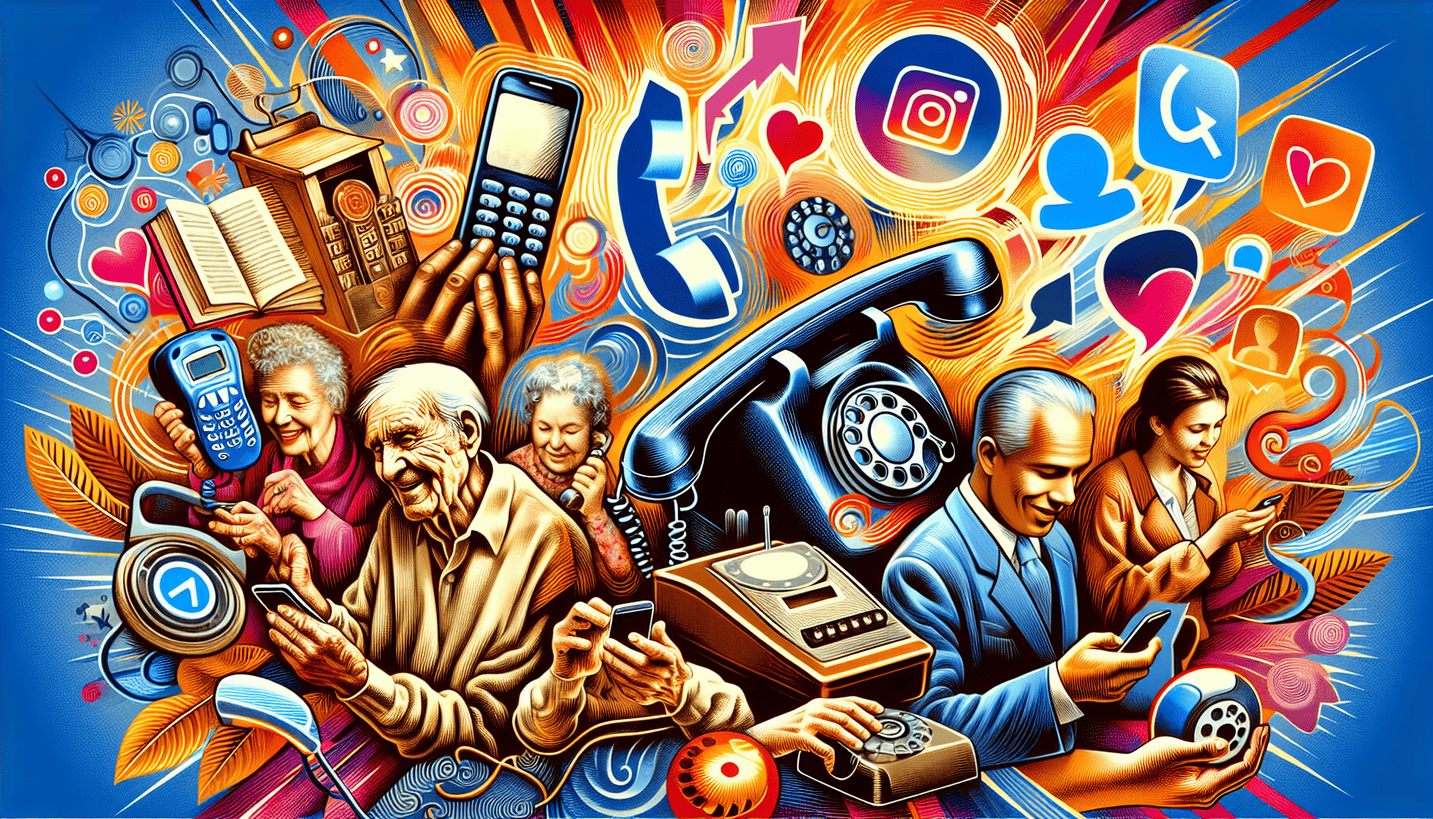Generational Tug-of-War: Who Wins the Workplace Battle?






Introduction: The Generational Landscape of the Modern Workplace
The modern workplace resembles a colorful quilt, stitched together by the diverse threads of various generations. As Baby Boomers seek the comfort of familiar patterns, Millennials and Gen Z swagger in, armed with innovative designs and bold hues. This delightful, albeit complex, tapestry of experiences, values, and expectations creates dynamic workplace interactions.
However, within this vivid landscape lies a underlying tension—a generational tug-of-war—fueling struggles between different work philosophies. What ignites these fights? Who truly stands to gain amid these clashes, and how can we bridge the ever-widening gaps?
Understanding Generational Characteristics: Different Perspectives, Different Values
To effectively address this tug-of-war, we must first peek at the distinct generations cohabitating in today’s offices:
-
Baby Boomers (1946-1964): Characterized by their strong work ethic and commitment to stability, this group values face-to-face communication and brings decades of experience to the table. They are often motivated by legacy and achievement.
-
Generation X (1965-1980): The skeptical pragmatists, Gen Xers are comfortable with both technological advancements and traditional methods. They prioritize work-life balance and often act as a bridge between older and younger generations.
-
Millennials (1981-1996): Wealthy in ideas and adaptability, Millennials thrive on collaboration, technology, and feedback. They view work as a means to an inspiring end, desiring purpose and engagement in what they do.
-
Generation Z (1997-2012): Digital natives who prioritize authenticity and inclusivity, Gen Z sees technology as an extension of themselves. They crave real-time communication, innovation, and opportunities for growth.
These generational traits shape how individuals approach their work and engage with their colleagues. For instance, a Baby Boomer might resist change because their past experiences cast shadows of doubt, while a Gen Z employee might feel energized and excited to disrupt the status quo. Such disparities can lead to misunderstandings and friction, making it crucial to recognize and respect each other’s unique perspectives.
The Roots of Resistance: Why Change Meets Hesitation
Let’s delve deeper into why resistance to change can flourish, especially across generational lines. Encased within every seasoned professional’s mind are stories of projects that fell flat, lessons learned the hard way. Baby Boomers often associate change with risk, stemming from past failures that haunt their wisdom. For instance, consider a scenario where a young professional proposes a cutting-edge marketing strategy featuring TikTok influencers, only to meet a skeptical gaze from an experienced colleague who recalls a time when fancier tools led to chaos.
On the flip side, Millennials and Gen Z crave innovation, viewing change as an open doorway to creativity and progress. This perspective fosters ambition but can simultaneously clash with the more risk-averse approaches of their predecessors. Today’s workplace can often feel like two worlds colliding: one anchored in tried-and-trusted methods, the other thriving on disruptive ideas.
Expectations vs. Reality: The Weight Each Generation Carries
With varying motivations comes a set of unique expectations. Younger employees often shoulder the burden of being the “tech-savvy” go-to, expected to repair technology issues and adapt to rapidly evolving practices. Meanwhile, older workers grapple with anxiety about their relevance as new trends emerge, often feeling overwhelmed by the fast pace of change.
What’s fascinating is how these expectations can amplify feelings of frustration and misunderstanding across generations. Young professionals may feel unrecognized for their adaptability and fresh ideas, while their senior counterparts often carry the weight of experience, silently asserting their expertise while navigating the tumultuous waters of this evolving landscape.
To illustrate this point, consider a recent company survey where employees from different generations shared their frustrations regarding the outputs of their collaboration. The younger employees expressed a desire for more recognition of their innovative ideas, while older workers discussed their struggles in adapting to new technologies.
Bridging the Gap: The Power of Effective Communication
Communication can either build bridges or create barriers, and in this case, it’s crucial to recognize how generational preferences impact workplace dialogue. Baby Boomers favor deliberate, face-to-face conversations, reminiscent of times when building rapport relied heavily on interpersonal connections.
In stark contrast, Millennials and Gen Z thrive in real-time, often gravitating towards digital communication platforms. This clash can lead to misunderstandings—a Gen Z employee firing off a quick message in an informal chat may feel frustrated at the delayed response from a Baby Boomer who values thoughtful, measured replies.
So, how can teams overcome these communication divides? Establishing a clear framework is vital! Consider implementing a system where:
- Email is used for formal requests, providing a record of communication.
- Instant messaging is reserved for quick updates and non-urgent questions, fostering swift problem-solving.
- Regular feedback sessions are scheduled bi-weekly, offering everyone an opportunity to engage in meaningful dialogue without feeling overwhelmed.
By practicing patience and openness, teams can create environments where intersecting communication styles are less disruptive and more collaborative.
Feedback Expectations: In Search of Connection and Growth
As we navigate intergenerational dynamics, the topic of feedback emerges as another layer of complexity. While Millennials and Gen Z are often hungry for frequent, real-time input—viewing it as essential for growth and retention—Baby Boomers tend to perceive feedback as something more profound, delivered only when absolutely necessary.
The difference in approach can lead to unintentional friction. For instance, a junior team member eagerly awaiting constructive feedback might interpret a lack of response as disinterest, while their older colleague fears they are undermining their authority by providing too much input.
The solution lies in cultivating a feedback-rich culture adaptable to all generations. Creating simple feedback protocols, such as ensuring that feedback is timely yet balanced in approach, can alleviate tension.
Transforming Tensions into Teamwork: Collaboration Across Generations
Despite the tensions, the beauty of a multigenerational workforce lies in its potential for collaboration! When differences in opinion are embraced rather than shunned, truly remarkable ideas can emerge. Consider a project team comprised of Baby Boomers, Gen X, Millennials, and Gen Z—all contributing their distinctive skills and knowledge towards a shared goal.
Initiatives like mentorship programs can foster collaboration, creating an environment where seasoned employees share their expertise while younger team members bring fresh perspectives to the mix. This dynamic not only enhances creativity but also contributes to employee satisfaction across generations, threading together a fabric that supports innovation while remaining grounded in experience.
The Future: Cultivating a Harmonious Inter-Generational Work Environment
Looking ahead, the potential for an evolving workplace filled with mutual respect and understanding remains bright. As generational divisions begin to soften, it’s essential to evaluate how trends like remote work and technology upskilling can help alleviate existing gaps. With technology becoming more ubiquitous and accessible across all age groups, a chance exists to cultivate intergenerational relationships that lead to workplace harmony.
Workspaces can embrace this symbiosis by encouraging ongoing dialogue about workplace dynamics, thus empowering everyone to actively participate in building a culture where collaboration thrives.
Rather than lamenting generational differences, consider how they can be leveraged for a stronger, more innovative team.
As we journey through this evolving workplace landscape, every interaction provides an opportunity to connect. Perhaps it’s time we begin contemplating—What can you do today to foster an environment rich in collaboration, allowing creativity and value to bloom in tandem across generational lines?
Let’s amplify our collective voices by sharing experiences and insights, reminding each other that these generational differences might just be the keys to unlocking something truly extraordinary.